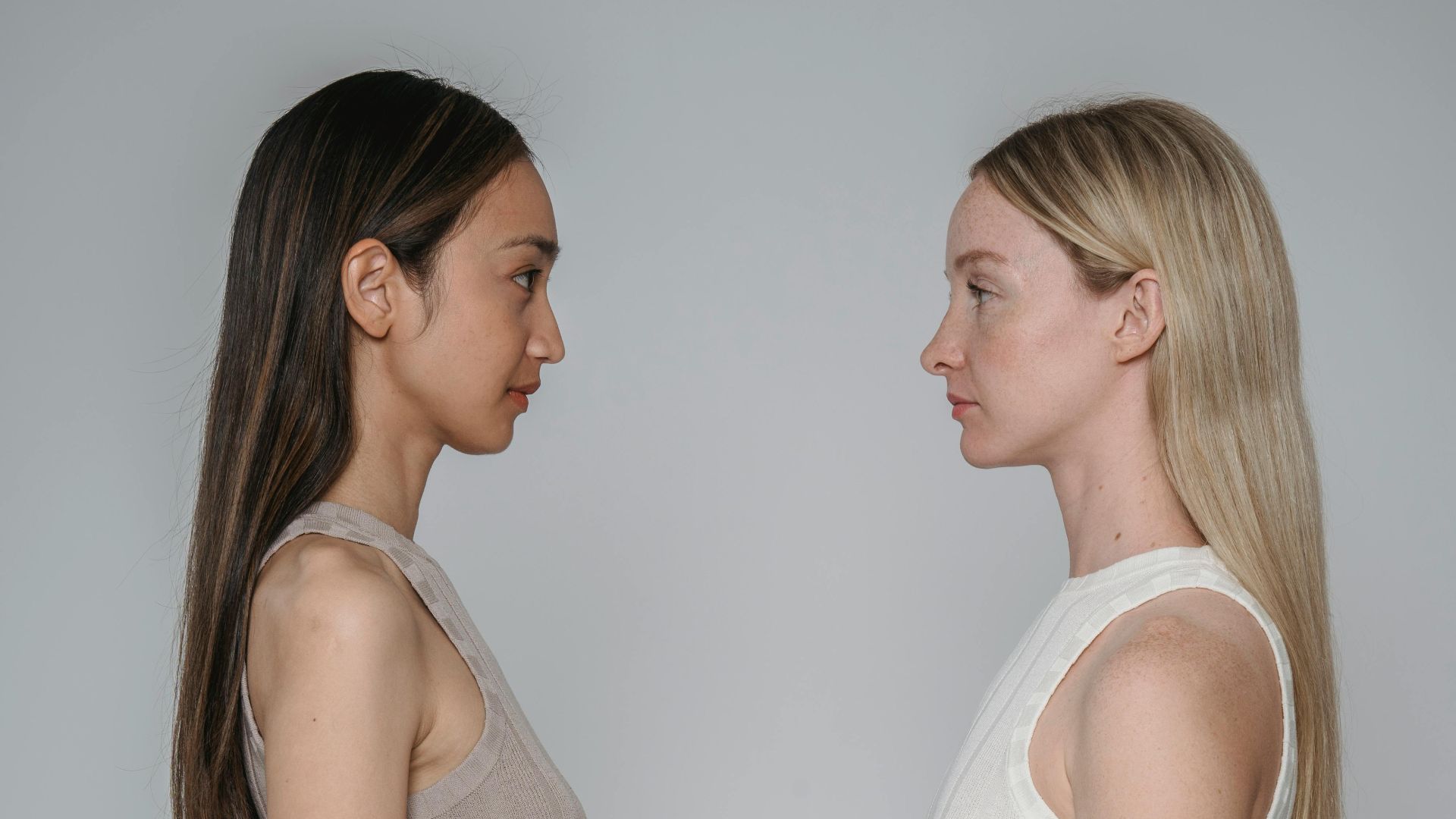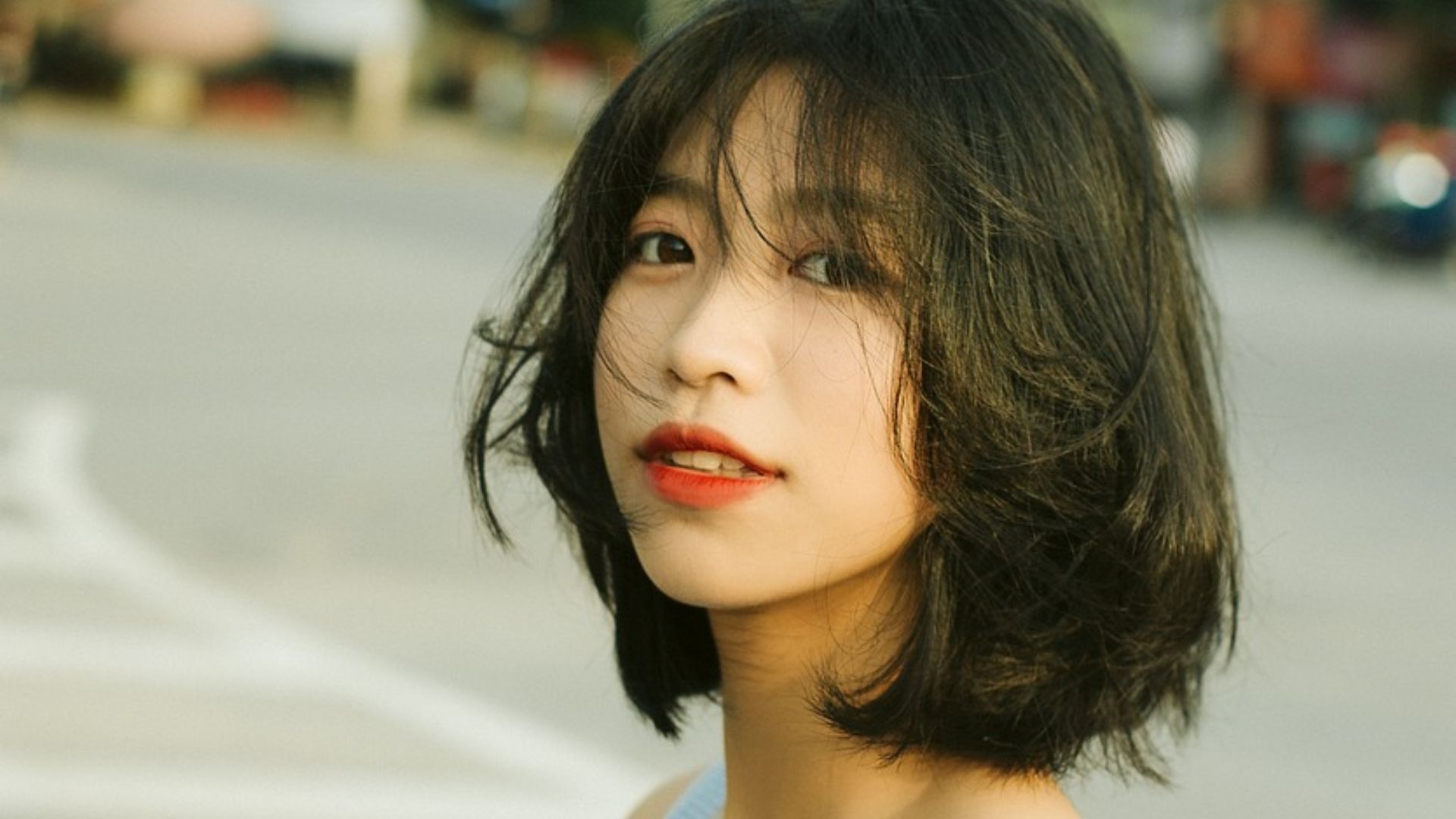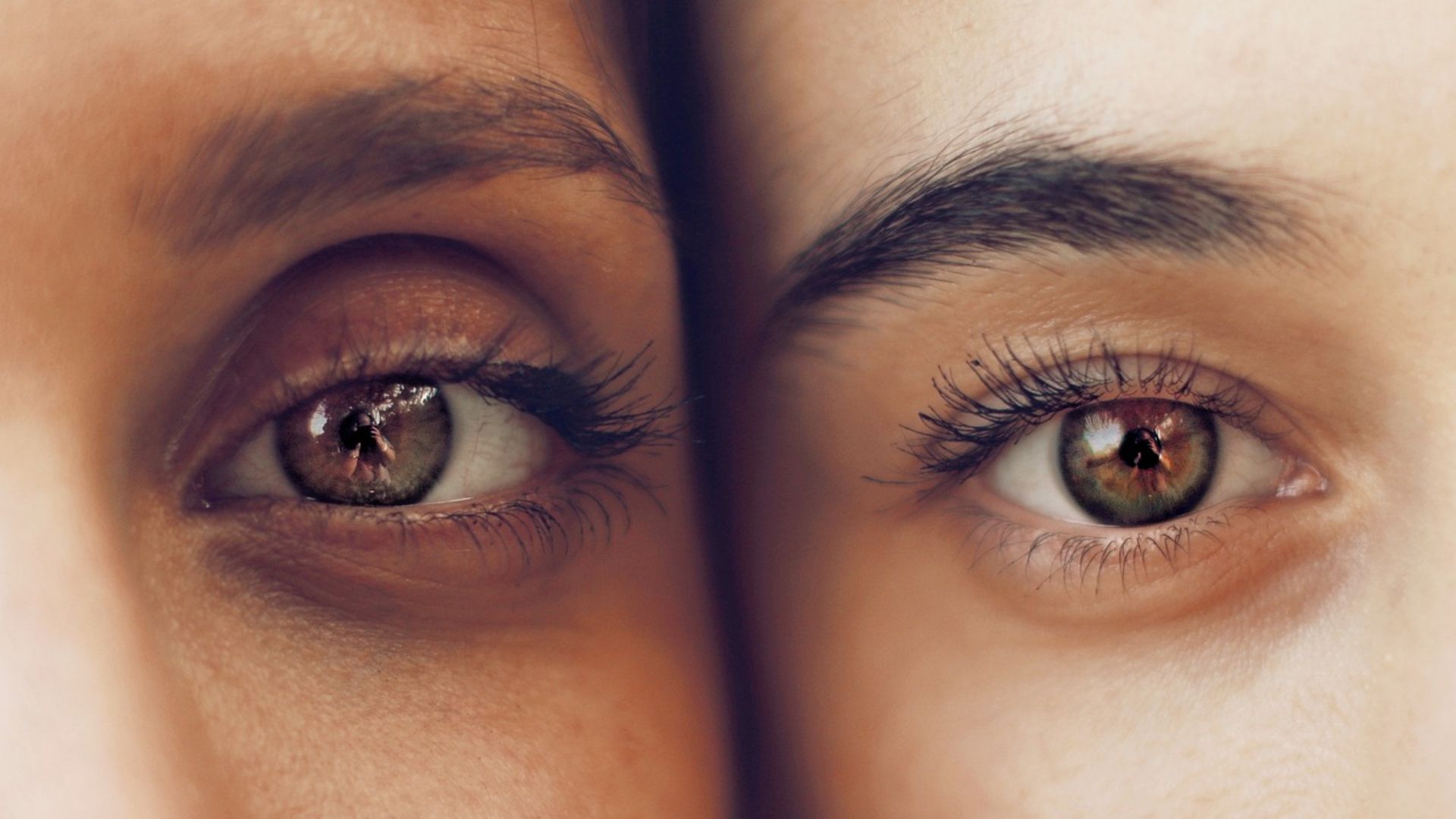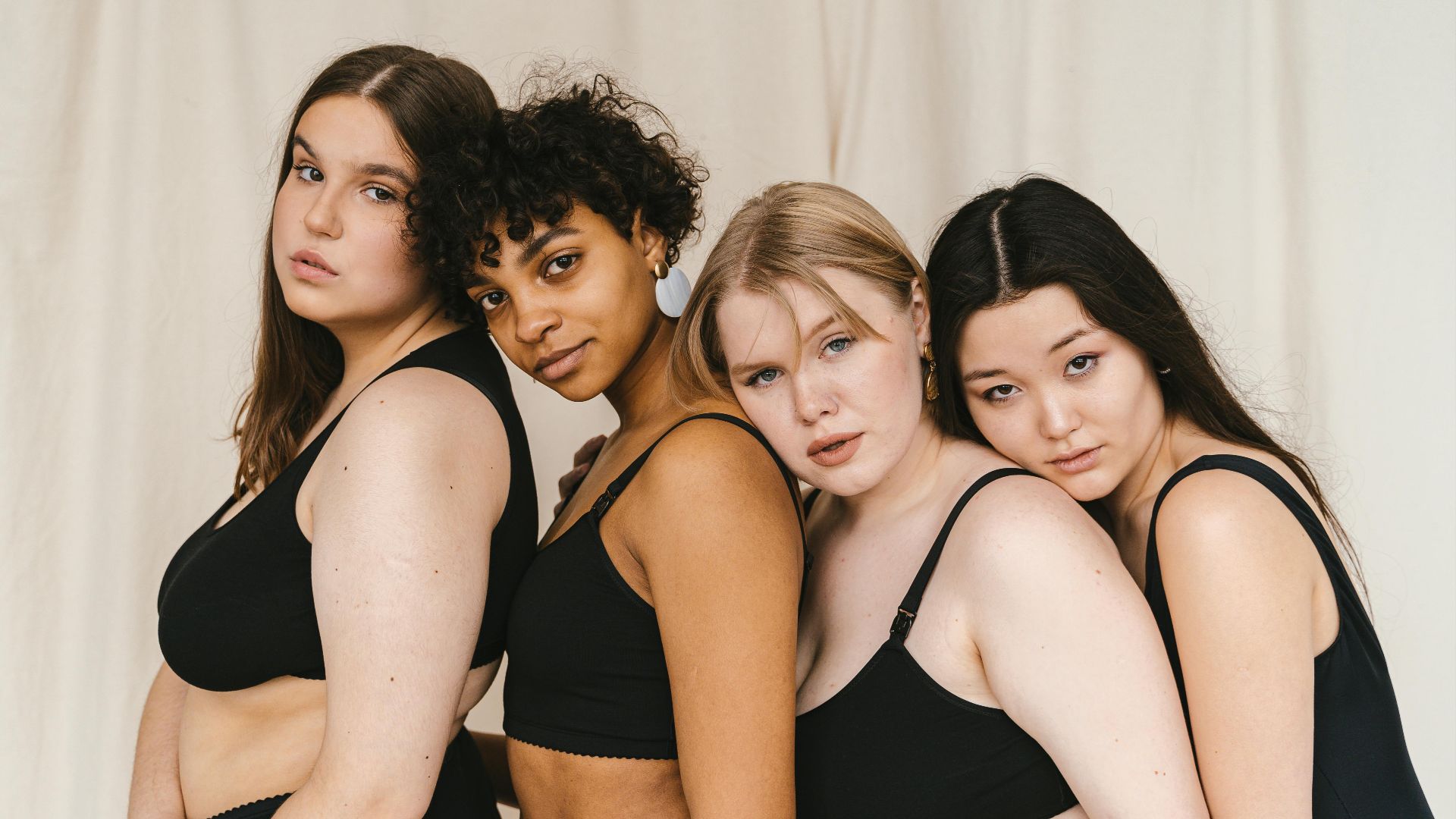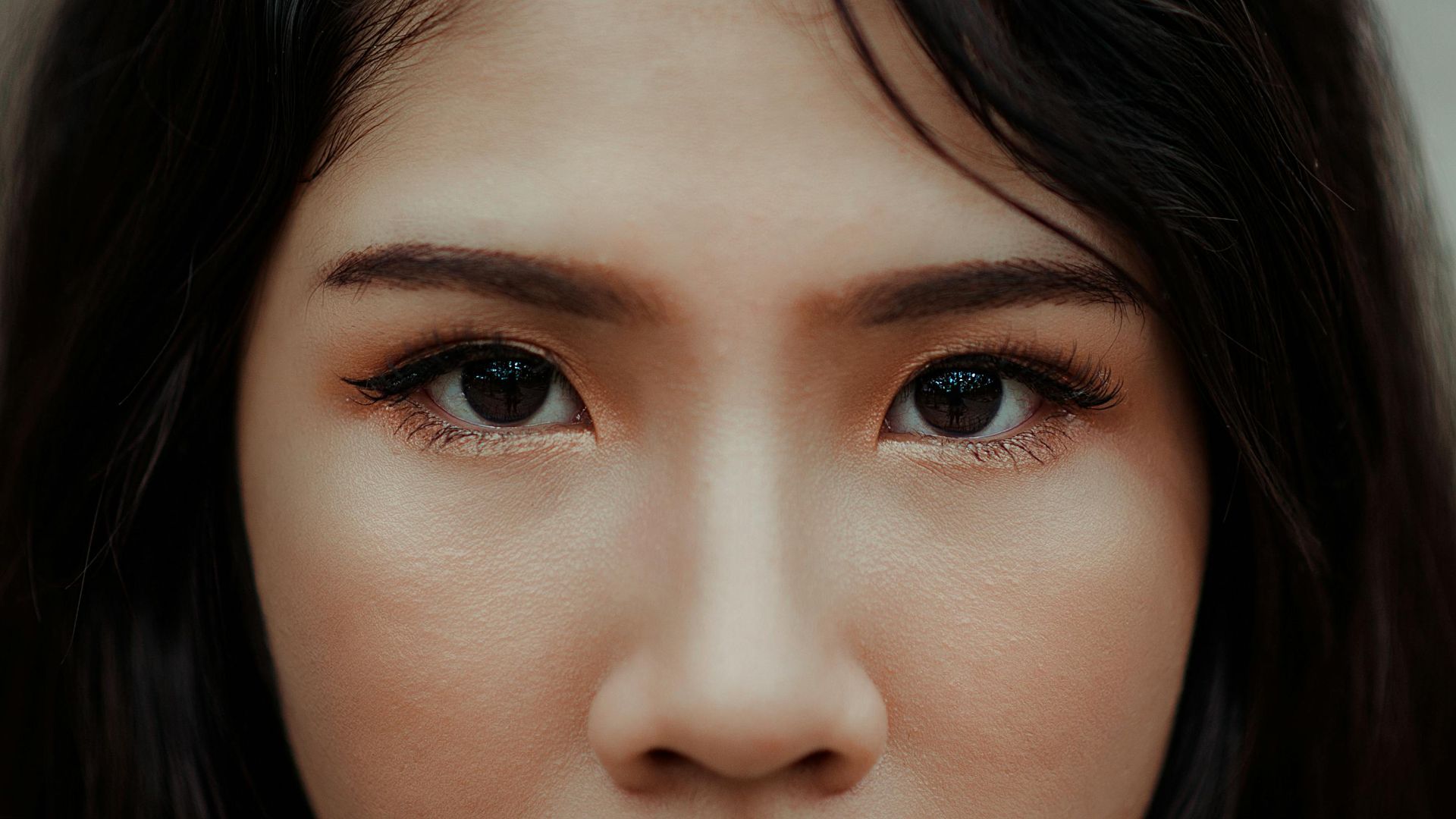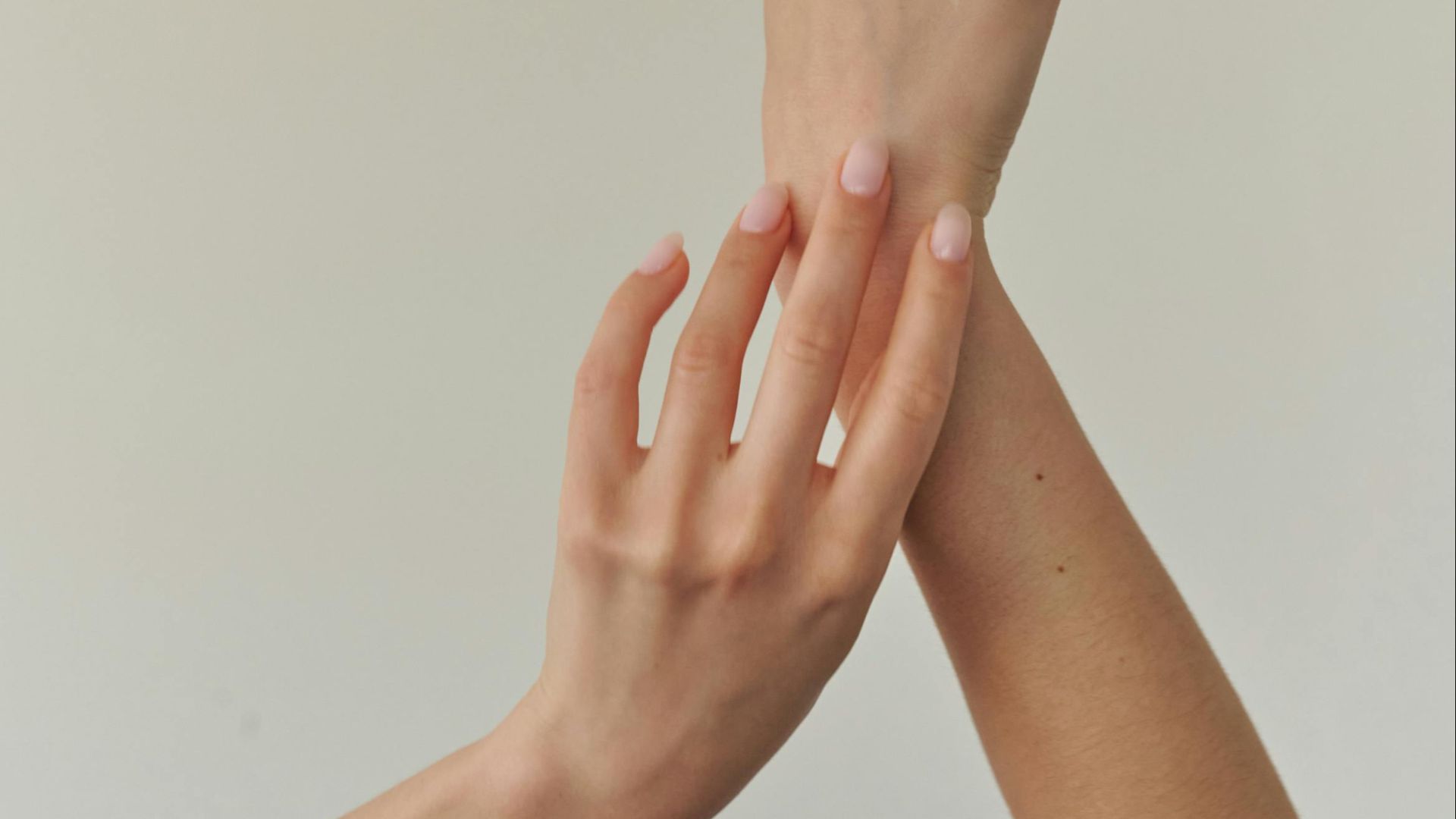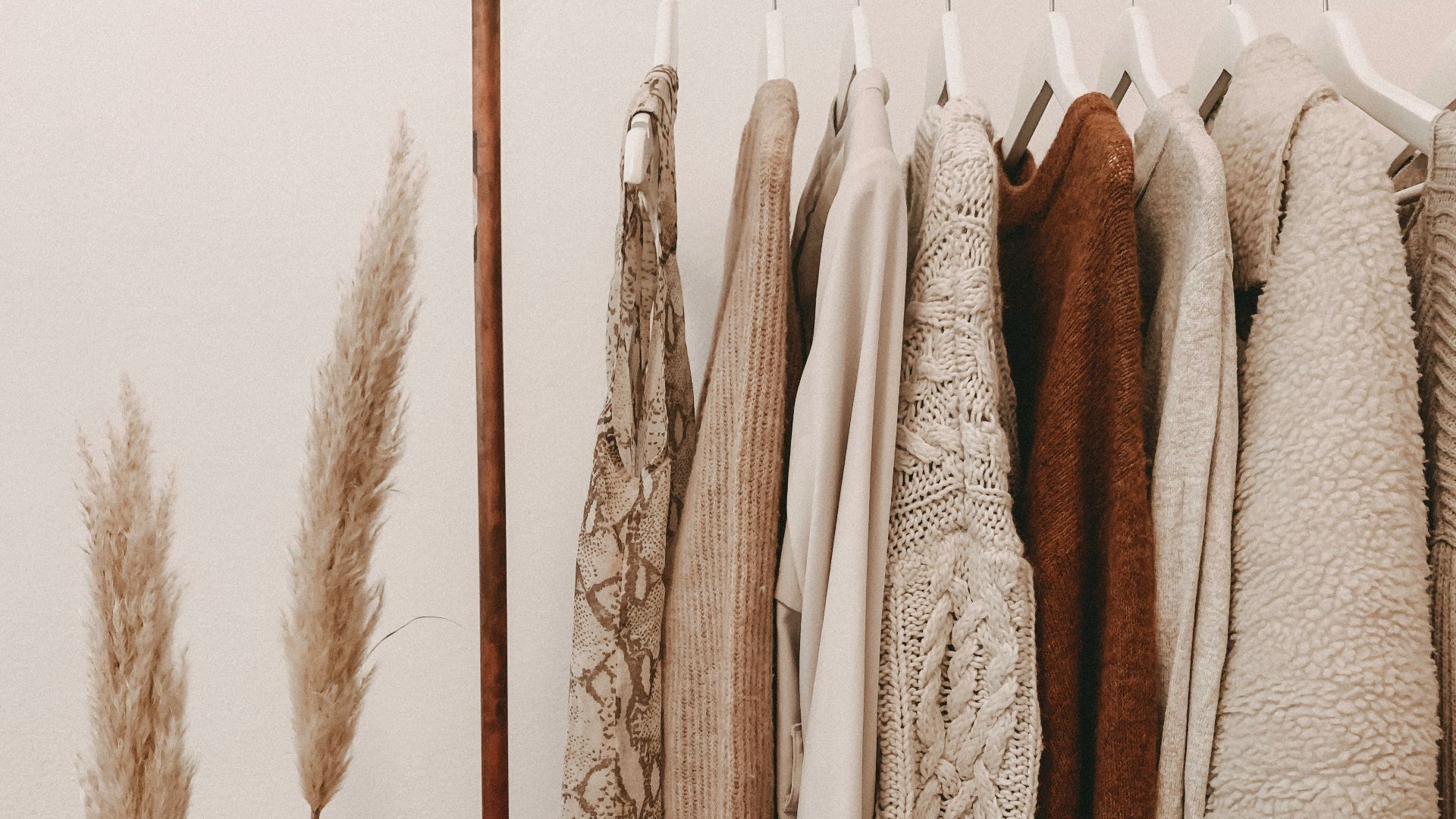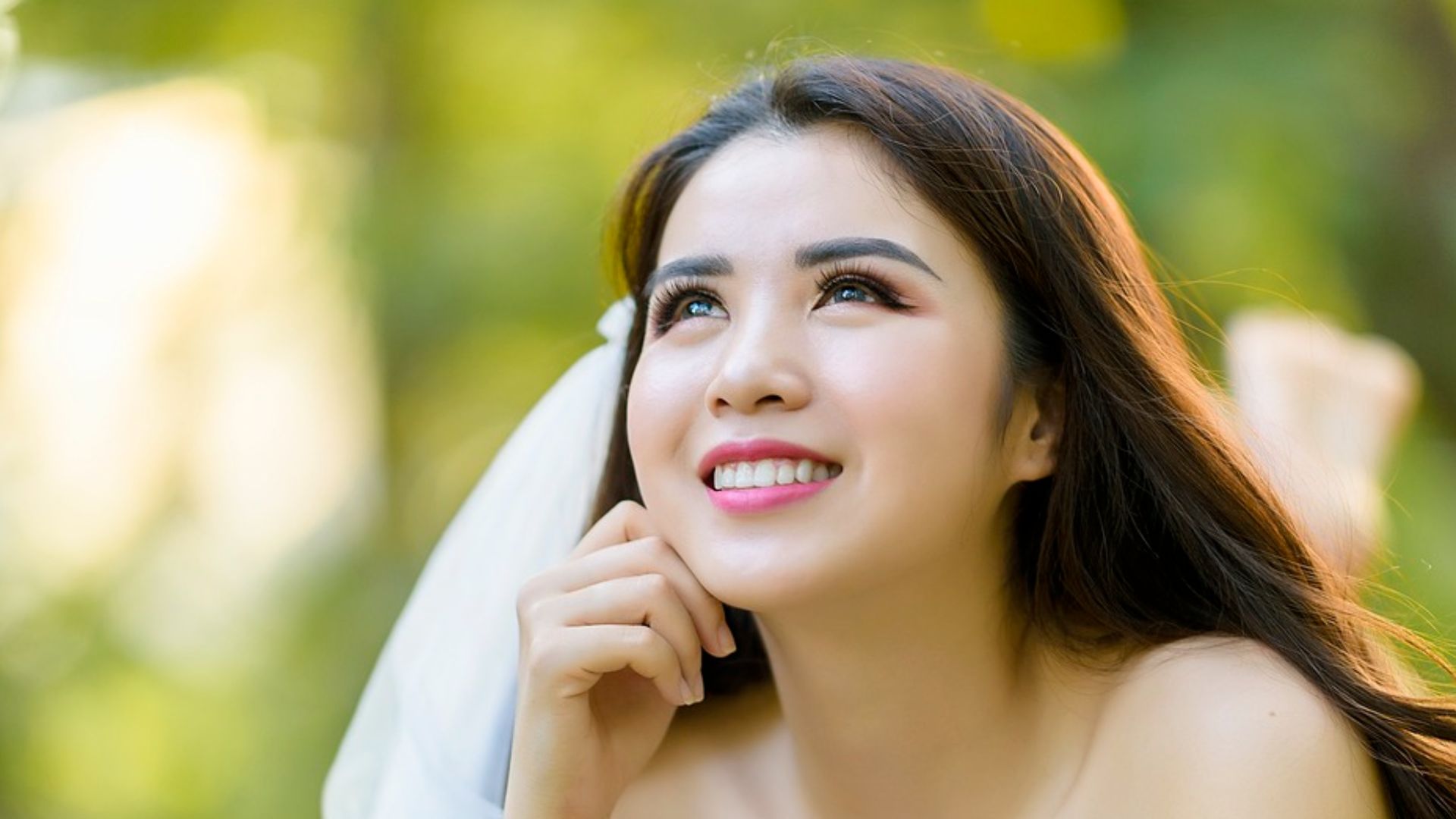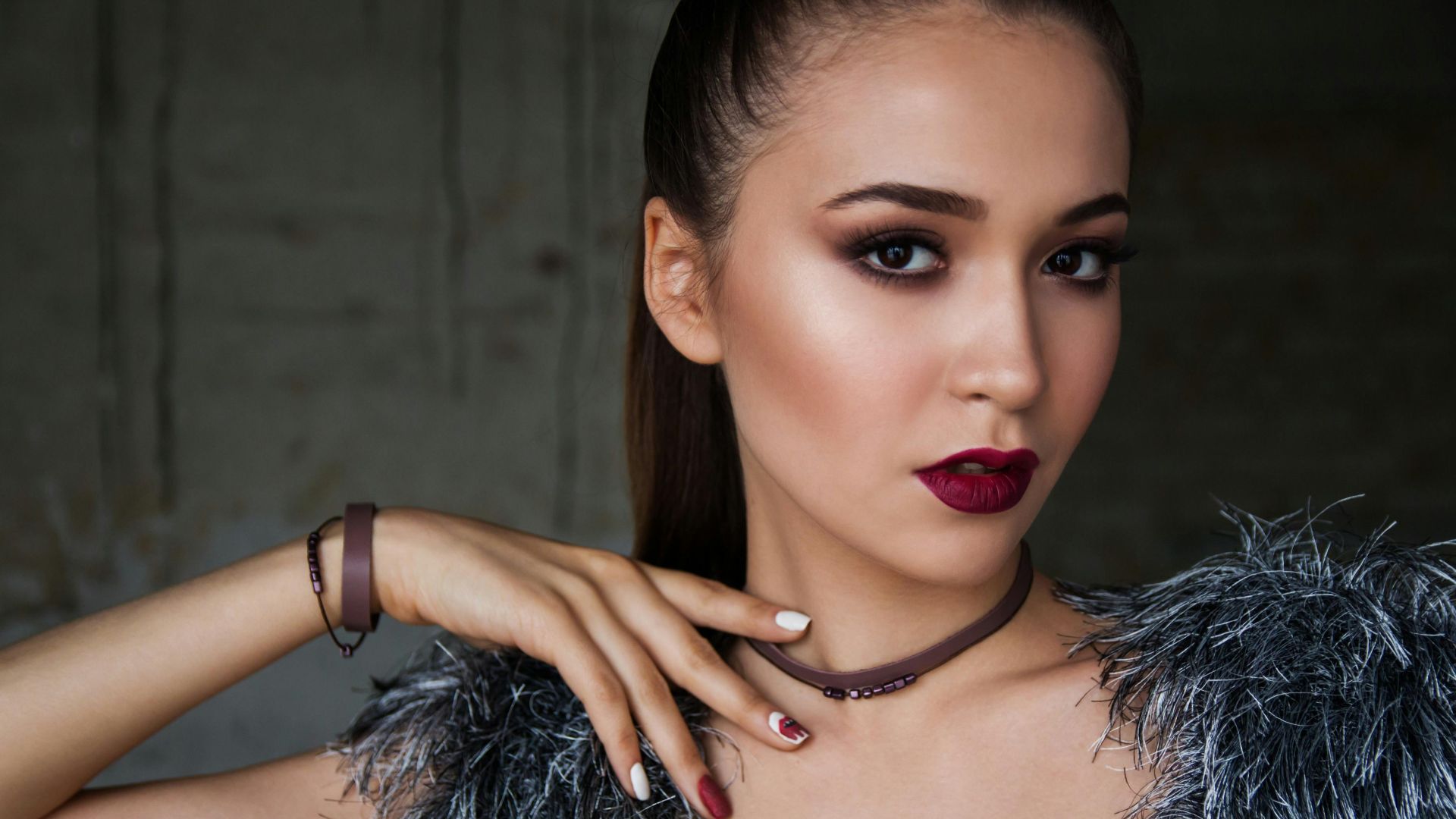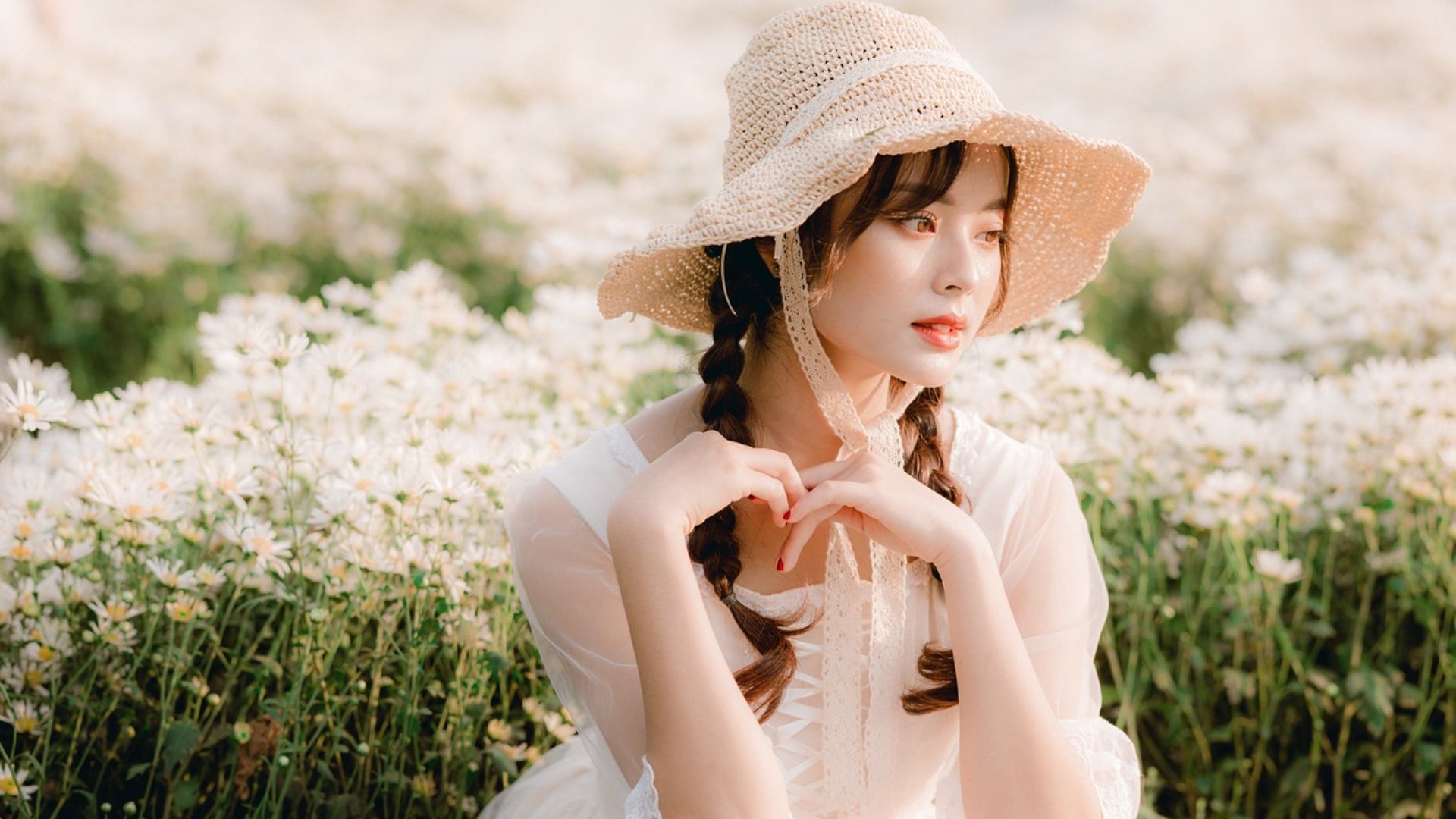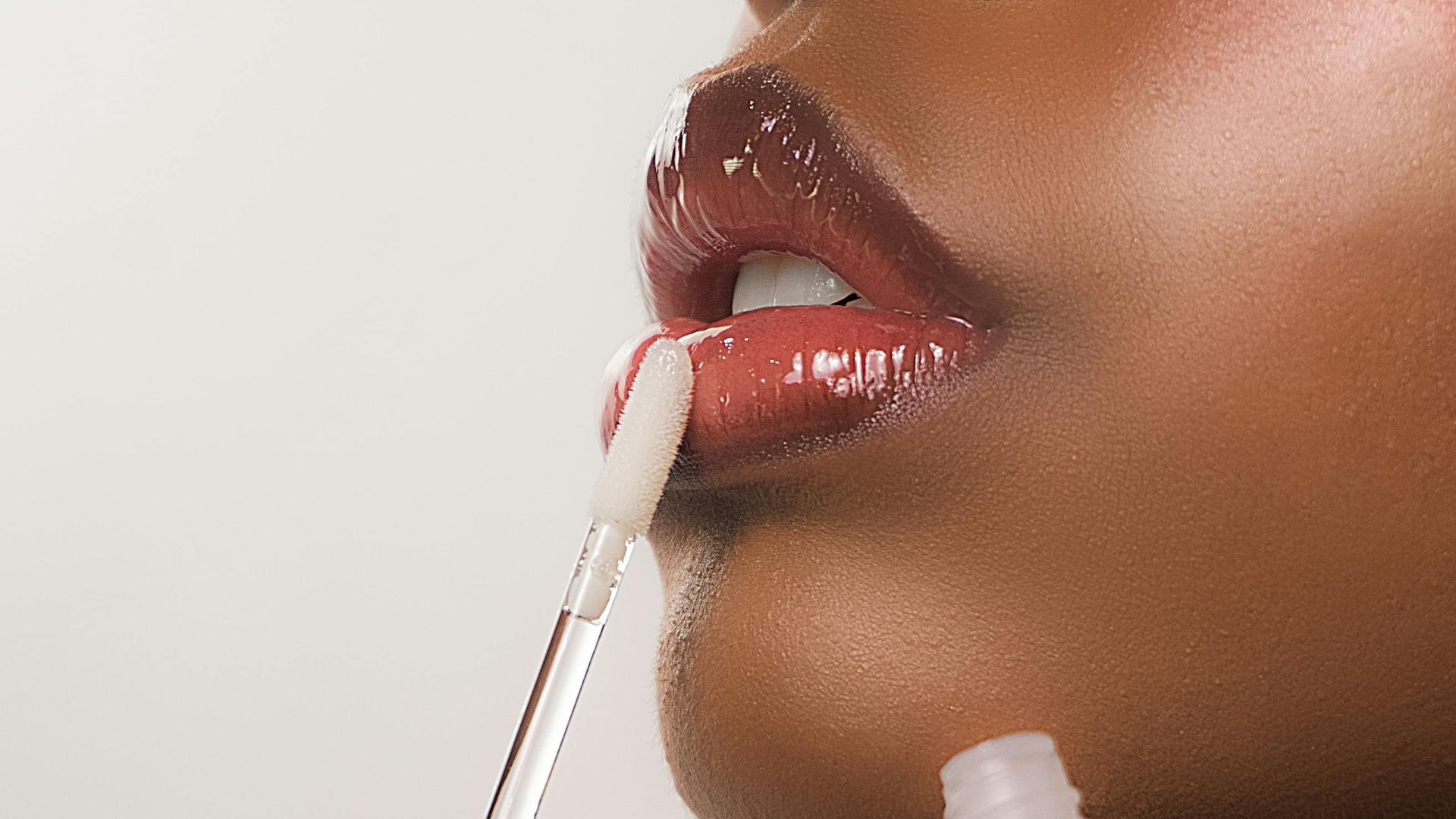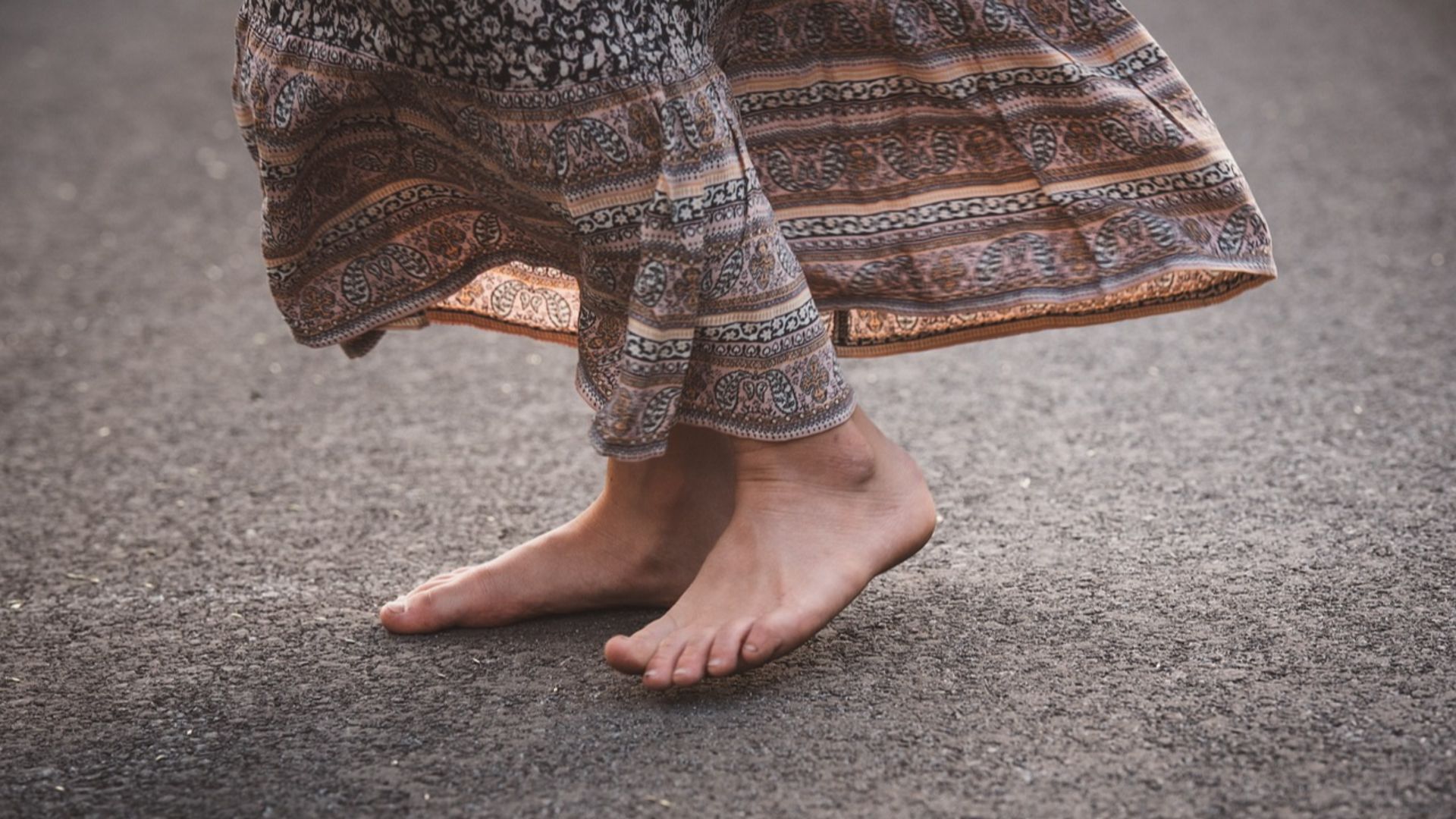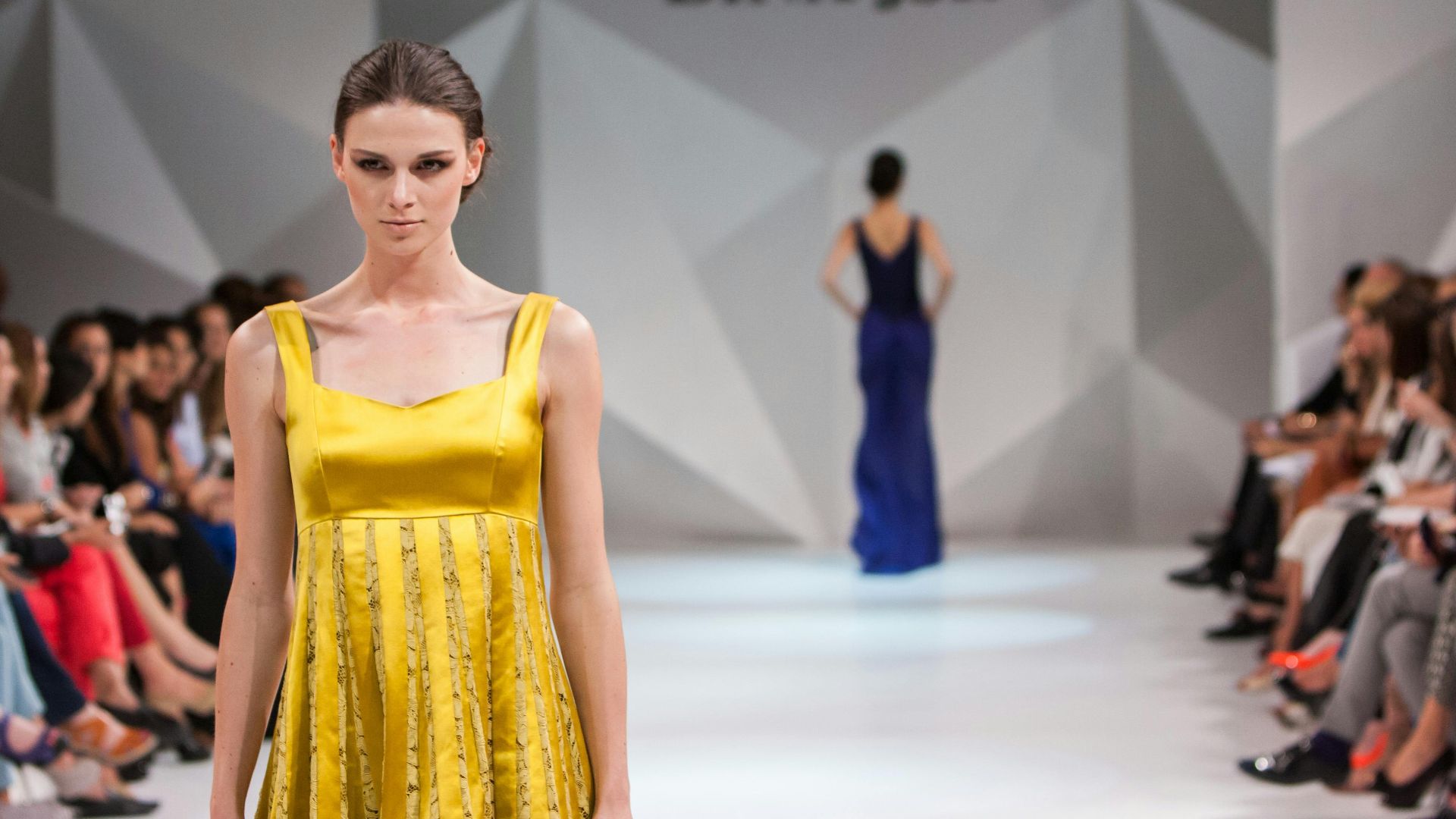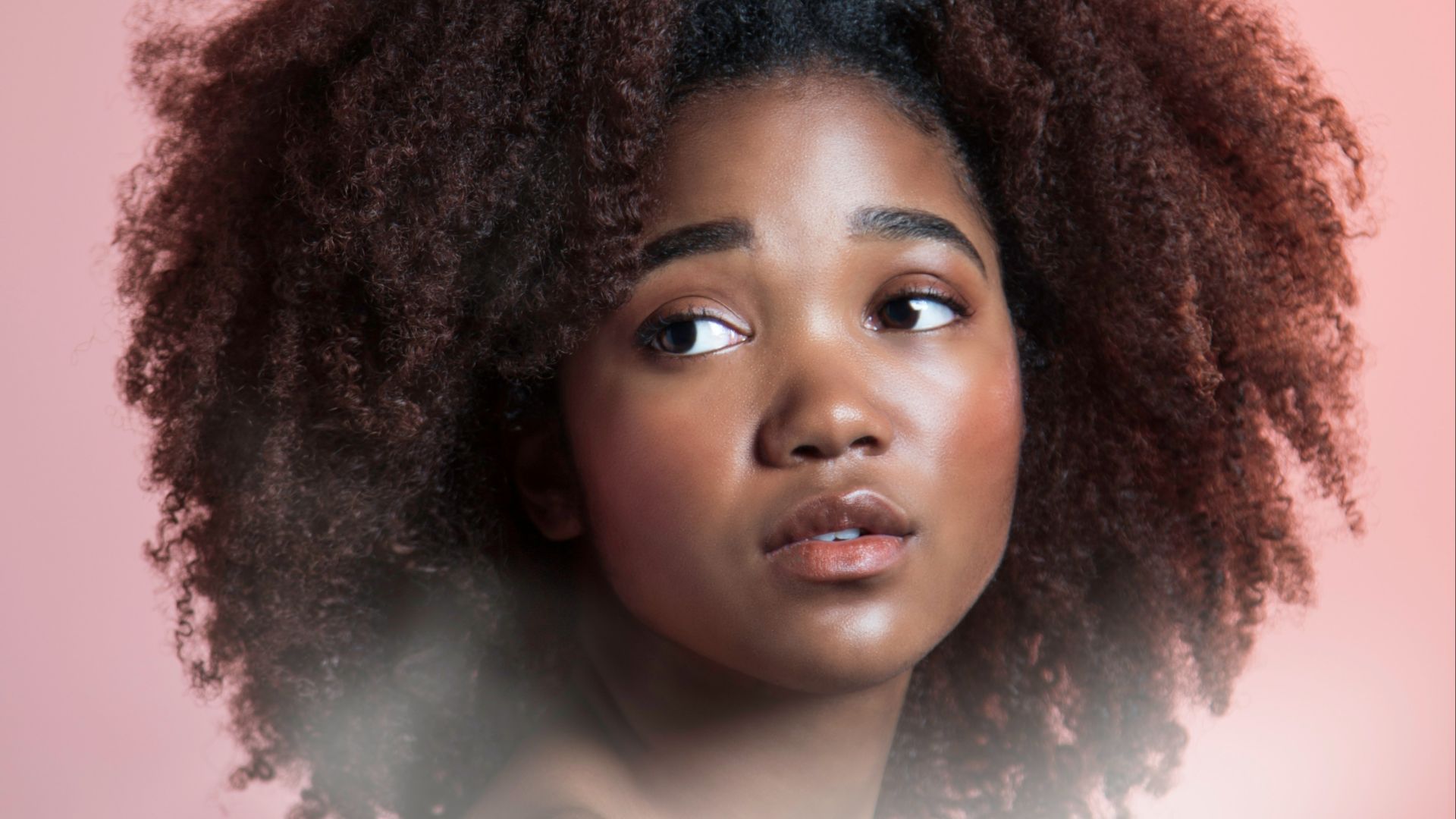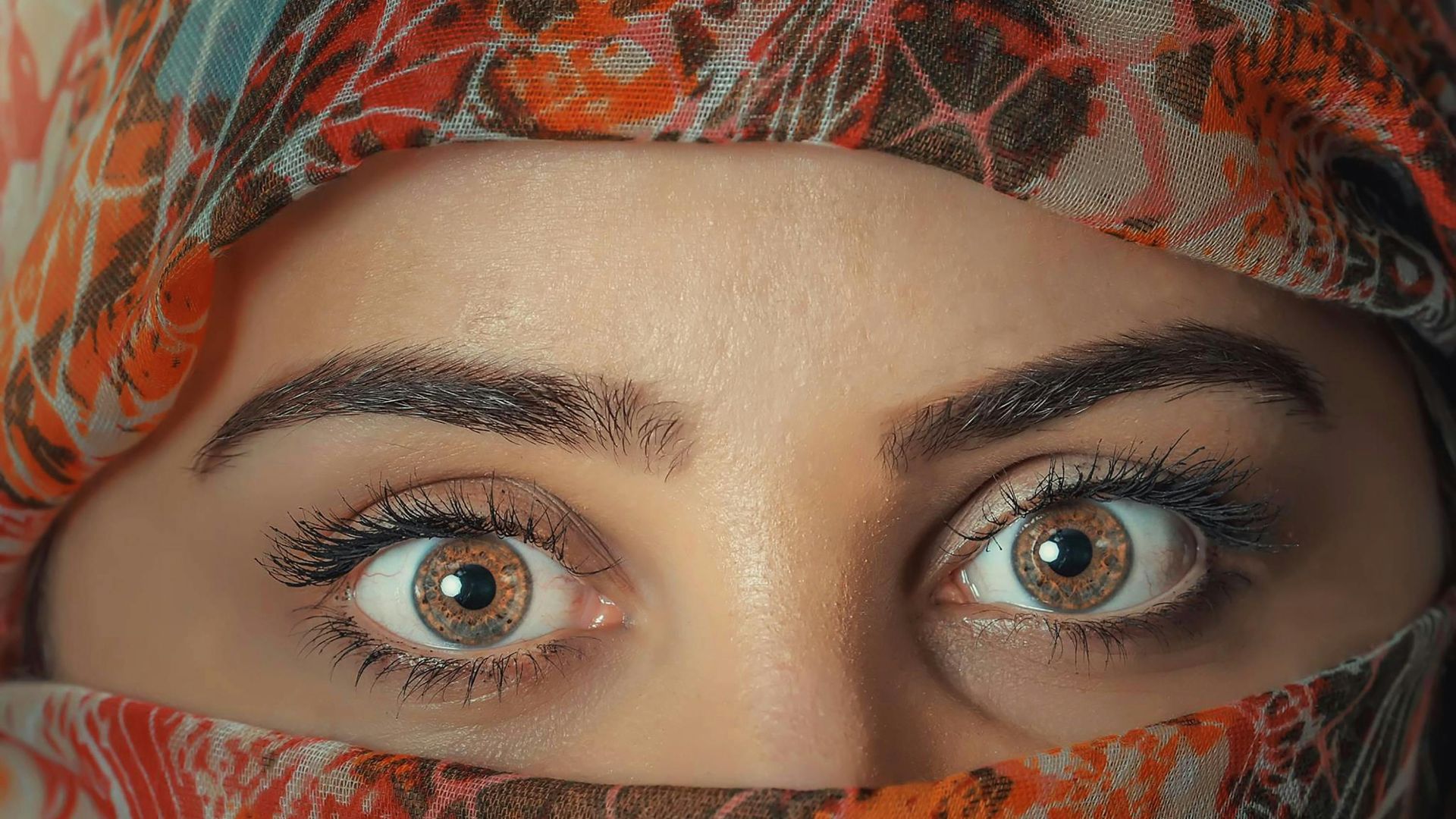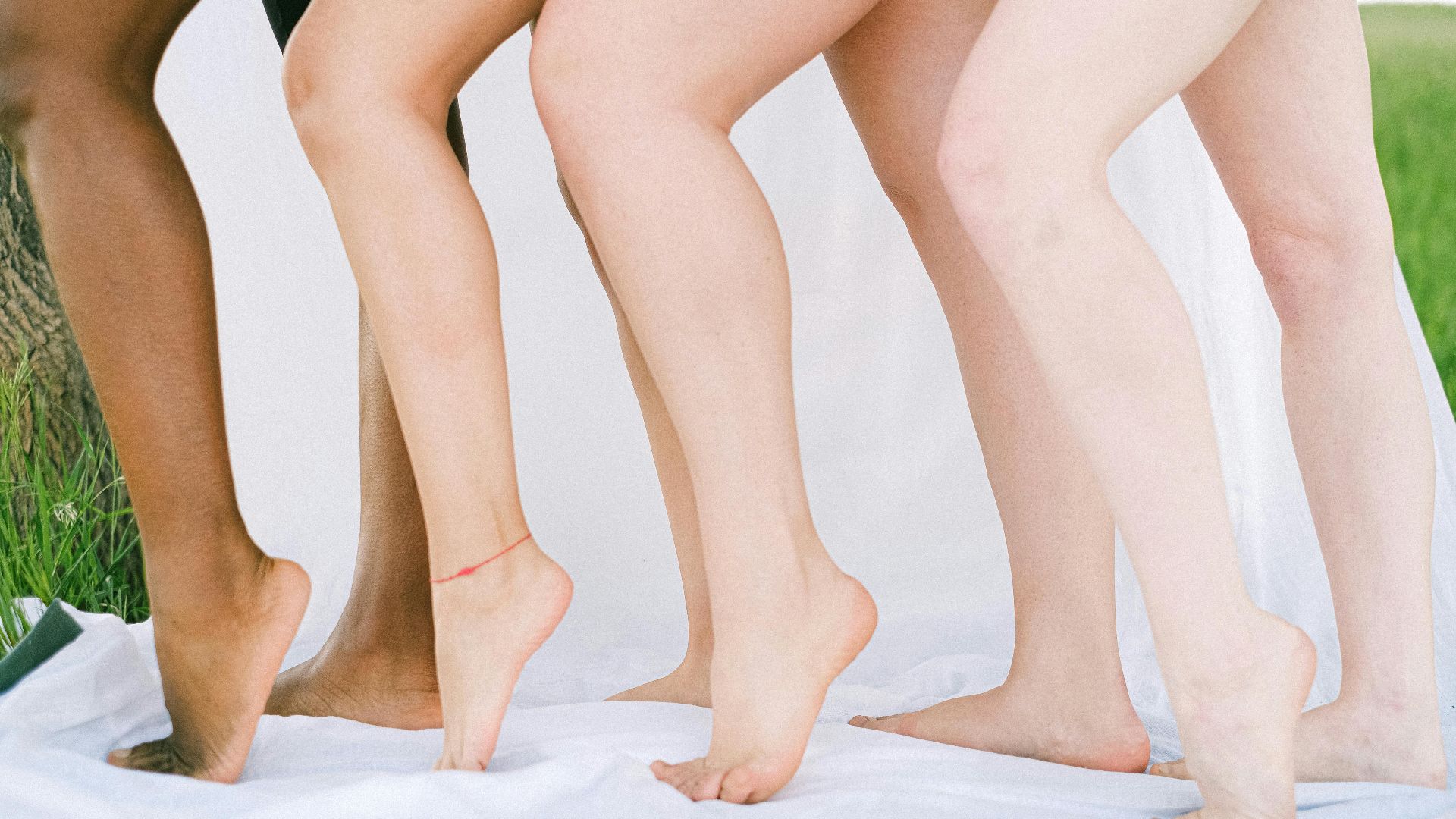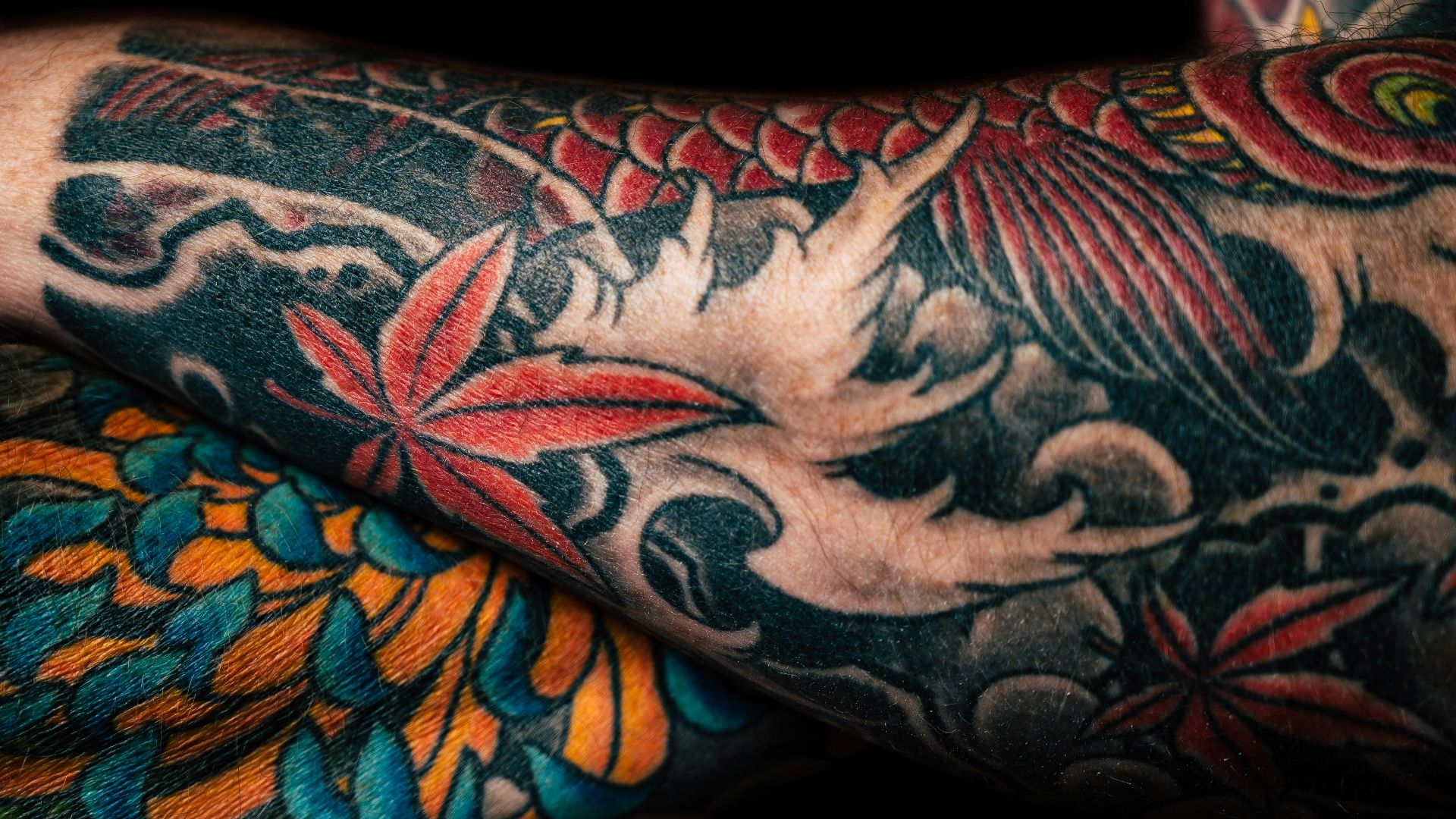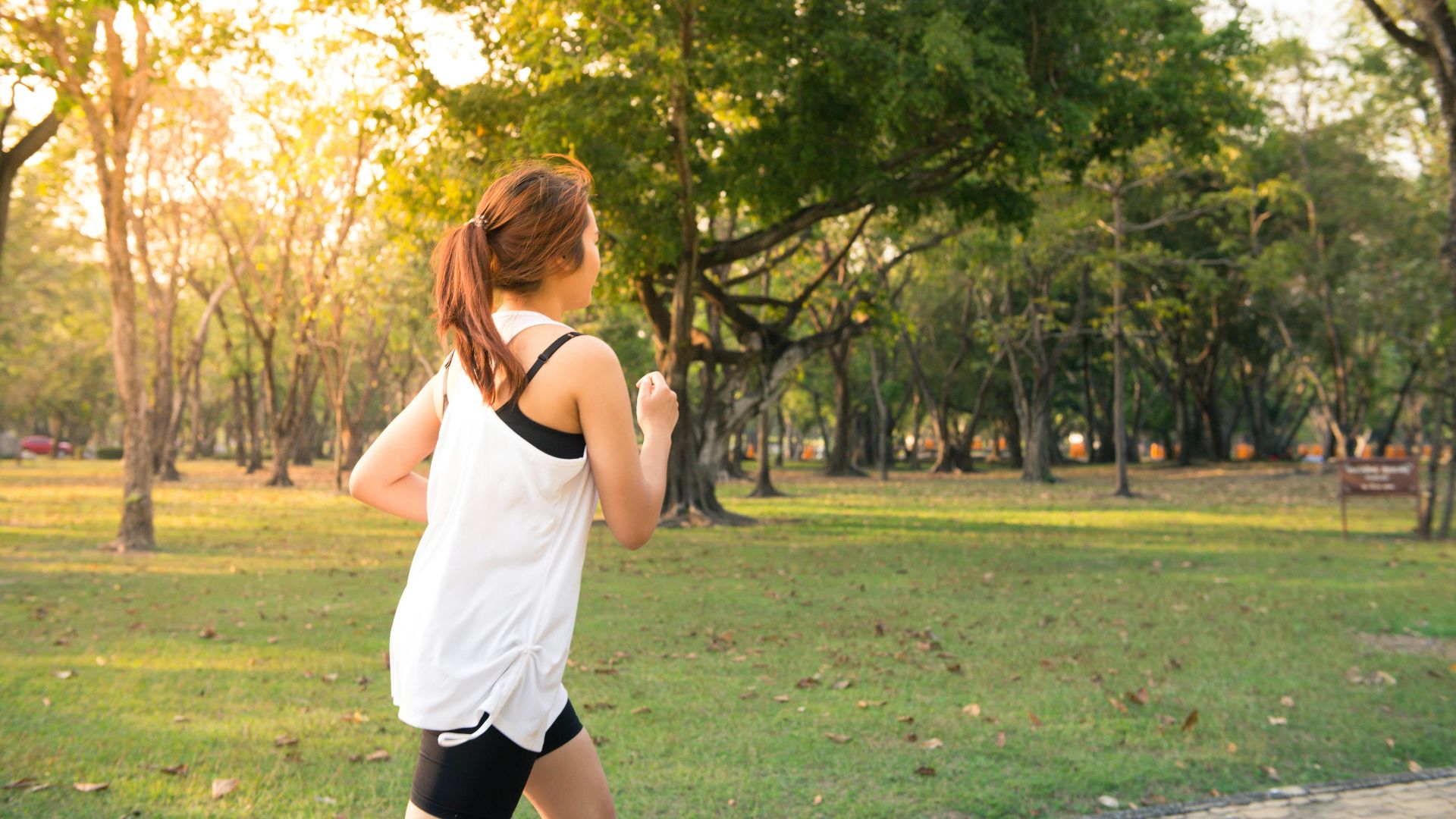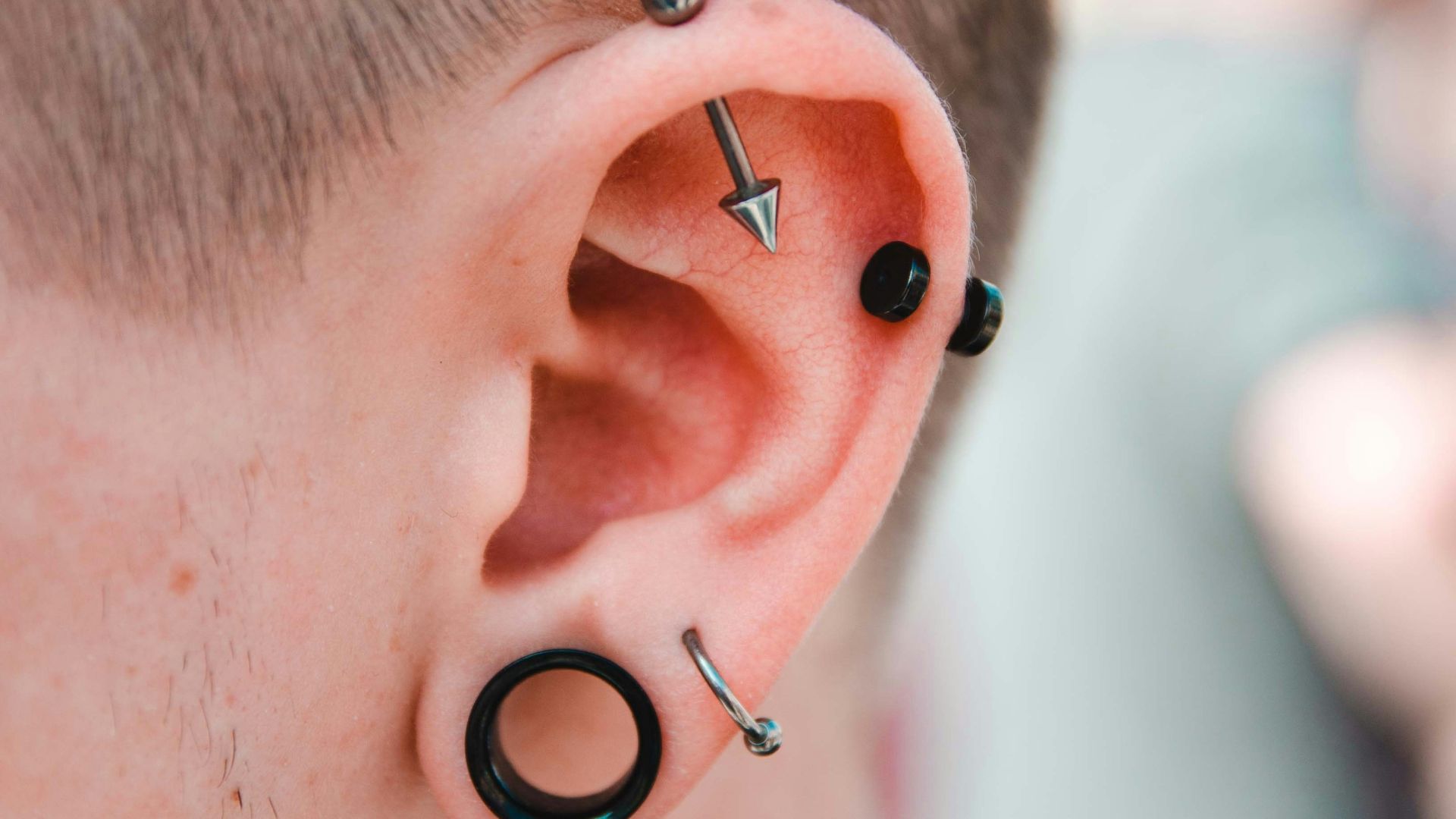Western vs. Asian Beauty Standards
It should come as no surprise that beauty ideals between the West and East are vastly different. While many Asian cultures prefer a slimmer build, pale skin, and round eyes with double eyelids, those in the West generally favor sun-kissed skin, curvier bodies, and full lips. Curious to learn more about how these cultures differ? Here are the 20 key differences in beauty standards between Western and Asian cultures.
1. Face Shape
In Asian cultures, a V-shaped jawline is most desired. If you have a small face, you may even get compliments from strangers. In Western cultures, while sharper jawlines and smaller faces are desired, different face shapes and sizes are celebrated.
2. Double Eyelids
Double eyelids are highly valued in Asian cultures. Some may correct their eye shape with tape or glue, and others may choose to get surgery done to create permanent folds. In Western beauty standards, this is often overlooked, as many naturally have double eyelids.
3. Body Size & Weight
In Asian cultures, a lot of emphasis is put on body image, and those who are overweight are often looked down on. This is why there's a lot of pressure to maintain a slim body and to eat healthy, as well as to exercise regularly. Though Western cultures also strive to achieve healthy bodies, curvy figures are deemed just as beautiful.
4. Nose
Both Asian and Western cultures desire tall, slim noses. But whereas Western society typically embraces different shapes and sizes, Asians tend to criticize flatter or bigger noses. Most use contour to create shadows needed to "fix" their nose shape, but some may choose to get rhinoplasty.
5. Skin Tone
Asians prefer to have a very fair skin tone; you'll often see them using umbrellas on a sunny day to shield themselves from the light, and you may often come across skin-whitening products in Asian skincare. On the other hand, in Western cultures, most people prefer to have a tanned, sun-kissed look.
6. Clothes & Style
There's a noticeable difference in style between Western and Asian cultures as well. While people in the West often wear clothes that flatter their body type—which may be tight or revealing—those in the East tend to favor more modest attire. And though style trends might still overlap between both cultures, the way they're worn or styled usually differs.
7. Eye Bag Fat
It might seem surprising that eye bags are considered a beauty standard, but in Asian cultures, they're a distinct feature believed to make faces seem more youthful. Known as aegyo-sal in Korean (translated as "charming fat"), these pockets beneath the eyes are often accentuated and highlighted to make the eyes appear bigger. While the trend has started to pick up in the West, it's not yet a mainstream part of the culture's beauty standards.
8. Glass Skin
Everyone wants flawless skin. In Asian cultures, the ideal is "glass skin"—a clear complexion with a natural, dewy glow. Achieving this look is why skincare is considered an essential part of the daily routine. In the West, while unblemished skin is also favored, textures and imperfections are seen as perfectly normal.
9. Makeup
In the East, makeup is centered around having a youthful, sometimes doll-like appearance: big eyes, a tall nose, a small face with a natural flush. In contrast, makeup looks in Western cultures tend to be darker, bolder, and glamorous, often featuring smoky eyeshadow, sun-kissed skin, and plump lips.
10. Youthful Appearance
As mentioned, Asian cultures favor youthful appearances, which is why certain features on the face are highly desired, like having round, doe eyes with aegyo-sal. While this beauty standard is also prevalent in the West, it's not quite to the same extent; people may want to hide the marks of aging, like wrinkles, but they tend to prefer a more mature look.
11. Lips
While plumper-looking lips are the ideal in both cultures, those in the East tend to favor smaller mouths as opposed to the more fuller, defined lips in the West, which may often be enhanced with fillers. Lip makeup also differs between both, with glossy tints being more popular in Asian cultures, while bolder, matte looks dominate the West. Although, now that makeup styles between both have started to merge, glossy, gradient lips are often the preferred style.
12. Feet
It might sound surprising, but Asian cultures have historically valued small feet. In particular, Chinese women used to practice foot binding to marry off well, and small feet were associated with a higher social status. Of course, there isn't such a standard in the West, as feet aren't viewed with such significance.
13. Height
While the ideal in both cultures for men is to be tall, women are a different story. Asian women tend to be shorter, which may be why maintaining a petite, youthful appearance is desired. In the West, women prefer to be taller, mature, and model-like.
14. Hair
Since Asian people typically have glossy, dark hair, this is typically considered the ideal. Hair dye is accepted, but some Asian cultures may find unnaturally bold colors—like green, blue, or purple—odd. In the West, people generally wear their hair however they want, though the preference is thick, healthy hair.
15. Eyebrows
Eyebrows are another defining feature of the face. In Asian cultures, straight brows are ideal, while arched brows are more preferred in Western cultures. However, both favor soft, natural-looking brows that don't aren't too thin or thick.
16. Legs
In Asian cultures, many prefer slim legs without muscles or curves. This means that thighs and calves have to fall in a long, lean line. In contrast, Western cultures favor lean legs as well, but toned muscles are considered normal and beautiful.
17. Tattoos
Tattoos are generally considered taboo in many Asian cultures. While younger generations embrace getting permanently inked, older generations view them in a negative light as they believe tattoos are often associated with criminals or law offenders. In the West, however, this kind of perception around tattoos is not at all present.
18. Health
Aside from the emphasis on eating nutritious food, those in the East have a skewed perception of what it means to be healthy. Those who are slimmer are automatically considered healthier than curvier people. In the West, however, people believe that healthy bodies come in all shapes and sizes, and mental health is treated equally as important as physical health.
19. Piercings
Piercings aren't considered as taboo as tattoos, but in some Asian cultures, they may still be frowned upon, especially if they're excessive and prominently displayed on the face. Western cultures, on the other hand, are generally more accepting of all kinds of piercings, since, like tattoos, they're a way to express personality.
20. Cosmetic Enhancements
While aesthetic cosmetic procedures are common in both cultures, people in the West typically focus on getting fillers, Botox, and injections over going under the knife. In some Asian cultures, where there's greater pressure to look flawless and fit the standard ideal, people may opt for more invasive procedures, like jaw contouring surgery.


